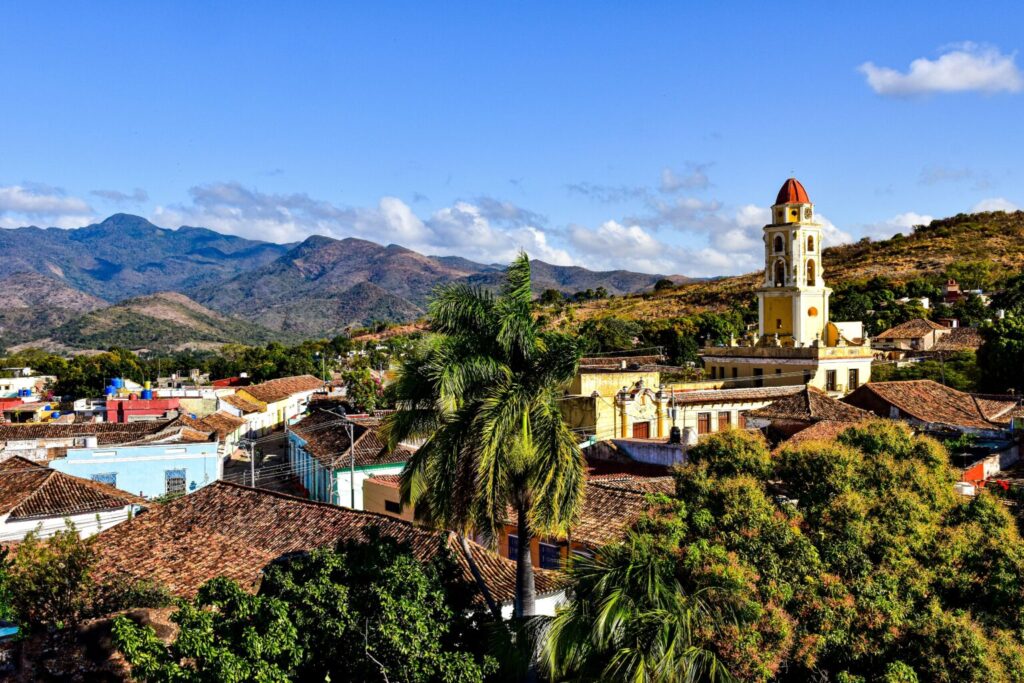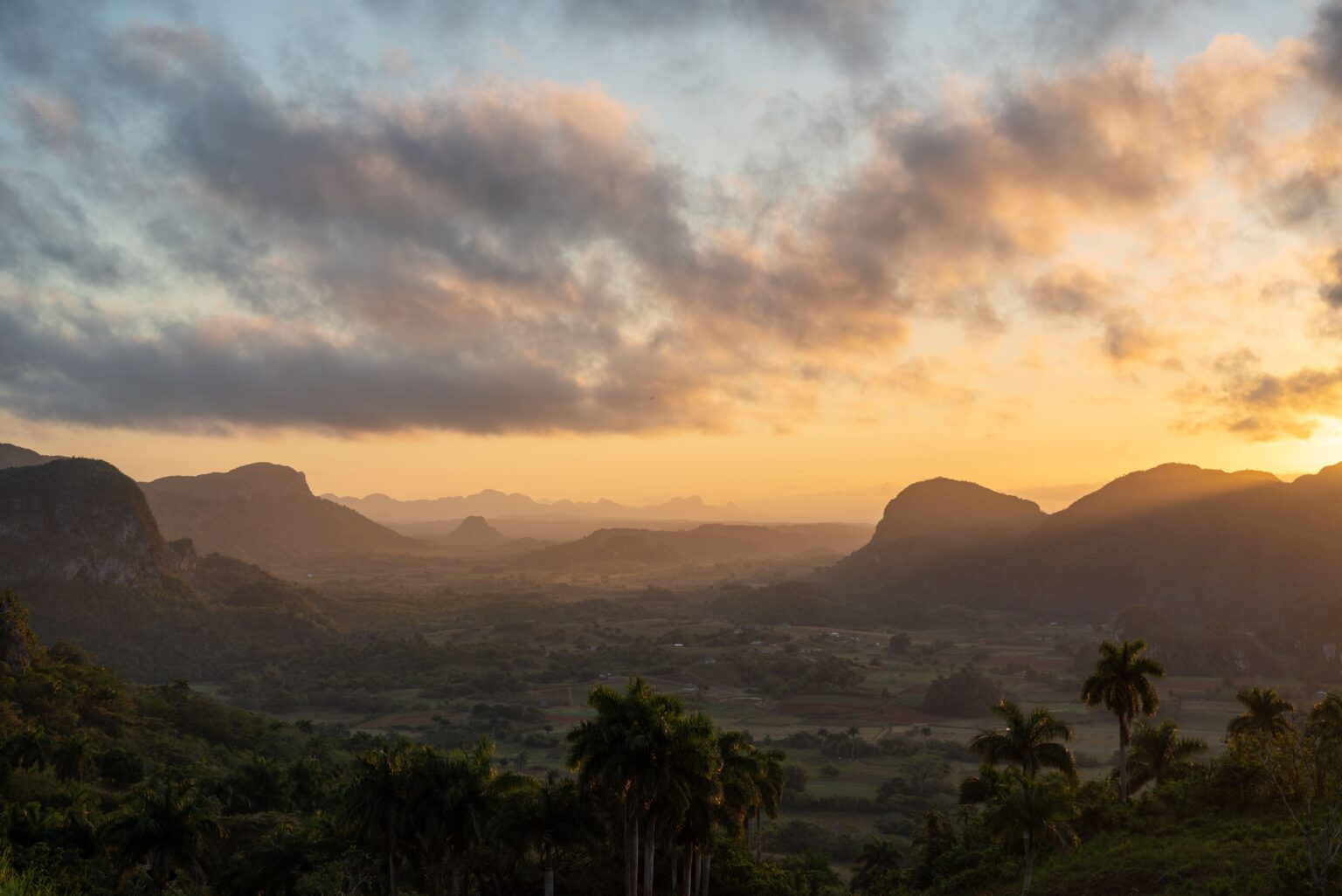This post may contain affiliate links, meaning IC Caribbean gets a commission if you decide to make a purchase, at no additional cost to you.
The incredible cultural heritage to visit in Cuba Island. Since 1959 UNESCO created a conservation category called World Heritage Sites. This distinguishes specific assets of exceptional relevance —cultural or natural— for the common heritage of humanity. In general, the first thing that comes to mind when talking about Cuba Island are its excellent and beautiful beaches, but the island also offers the possibility of discovering sites loaded with great historical and cultural value. This is a summary of the places that constitute World Heritage Sites and that you can visit and learn about in Cuba.
The customs and traditions of Cuba are an essential component of the national identity and foundational element of our culture.
When you think of Caribbean culture, and specifically Cuban culture, surely the rhythmic steps of salsa come to mind, the stridency of rum burning the throat on a very hot island and the laughter that welcomes visitors to this land. In a certain way, all this is Cuba, but it is also much more.
Historic Center of Old Havana and its System of Colonial Fortifications

With almost five centuries of life, Old Havana and its system of colonial fortifications, located near the interior of the port, shows together with its natural attributes a valuable architectural heritage, recognized among the best preserved in Latin America.
Founded in 1519 by the Spanish, Havana became an important shipyard for the Caribbean region in the 17th century. Although today it is a very extensive metropolis, its old center preserves an interesting mix of baroque and neoclassical monuments, as well as a homogeneous set of houses with arcades, balconies, wrought iron grilles and interior patios.
Declared a Cultural Heritage of Humanity in December 1982, Old Havana preserves the typical architecture of the colonial era and has squares, palaces, mansions, cathedrals, castles, convents and churches, in which the mixture of baroque monuments and neoclassical.
Historic Center of Trinidad and its Valley of the Sugar Mills

Registered in 1988 on the World Heritage List. The city owes its birth to the sugar industry and constitutes a representative example of the urbanism of the first settlements founded in America in the 16th century, and of its harmonious growth until the beginning of the 19th century.
Founded at the beginning of the 16th century in honor of the Holy Trinity, the city of the same name was a bridgehead in the conquest of the American continent by the Spanish. Its buildings from the 18th and 19th centuries, such as the Palacio Brunet and the Palacio Cantero, were built at the time of the prosperity of the sugar industry.
Almost all the attractions to see in Trinidad are concentrated around the Plaza Mayor, a most charming place surrounded by palaces turned into museums, churches and ideal colonial houses.
The cobbled center of Trinidad is the best preserved in Cuba and the main reason is that after the abolition of slavery and the collapse of the sugar business, the city plunged into poverty. This was precisely the key to its preservation: since there was no money, there were no changes. The rich without slaves could not maintain their standard of living and emigrated, leaving Trinidad frozen in time.
Castle San Pedro de la Roca in Santiago de Cuba

Commercial and political rivalries in the Caribbean region during the 17th century resulted in the construction of this castle, a massive set of fortifications erected on top of a rocky promontory to protect the important port of Santiago.
This intricate complex of forts, magazines, bastions and batteries, built according to the design principles of Renaissance Italy, is the most complete and best preserved example of Spanish military architecture in the Americas.
Inside the castle there is a museum, since 1978. Its five rooms house exhibitions of weapons, objects, documents and historical photographs that allow us to delve into the colonial past inscribed on the walls.
In addition, the castle offers spectacular views of the Caribbean Sea and the bay, as well as the Dungeon of Death, used as a punishment and torture cell. In 1898, it became a military prison.
In addition, the castle preserves the traditional ceremony of the Cañonazo Mambí, a rite that aims to pay tribute to Cuban patriots.
Alejandro de Humboldt National Park

This park is one of the most important places in the northern hemisphere for the conservation of endemic flora. Thanks to the high endemism of its flora and fauna, it has become a kind of natural laboratory. Some of the endemic species present in the area are the parrots, the catey, the Royal Woodpecker, the Caguarero Hawk, the Almiquí and the Manatee.
The national park is located in the Cuban provinces of Holguín and Guantánamo in the west of the island and was inscribed in 2001 on the list of World Heritage Sites.
It includes rivers, forests, waterfalls, streams, plains, bays, coral reefs, and mountains. And of the four biosphere reserves in Cuba, the largest and most valuable is within this park, occupying more than half of its entire surface: the Cuchillas del Toa biosphere.Its name pays homage to the German Enrique Alejandro, Baron de Humboldt, an important scientist who toured the island in the 19th century, acquiring the title of Second Discoverer of Cuba.
Urban Historic Center of the City of Cienfuegos

Located in the southern center of the island of Cuba, Cienfuegos is the only 19th century Cuban and American city founded by the French under the Spanish Crown. Over time it became a commercial center for products such as sugar cane, tobacco and coffee.
Bathed by the waters of the Caribbean and located in the south central part of the island, Cienfuegos is in the middle of a region that produces coffee, tobacco, mangoes, and sugar cane. Its architecture, neoclassical at first, evolved towards more eclectic forms, without the urban landscape ever losing its overall harmony.
The most notable buildings are: The old Plaza de Armas, today José Martí Park, the Nuestra Purísima Concepción Cathedral, the Tomás Terry Theater, the Ferrer Palace, the old Spanish Casino, the Martí Park and the Paseo del Prado.
Urban Historic Center of the City of Camagüey

Camagüey is one of the first seven towns founded by the Spanish in Cuba. This city played a leading role as the urban center of a territory dedicated essentially to cattle ranching and the sugar industry.
Founded in 1528 in its current location, the city developed from an irregular urban scheme made up of a network of plazas, squares, winding streets and irregular blocks of houses, which is very unusual in Latin American colonial cities located on flat ground.
The Historic Center of Camagüey covers 54 hectares and is an exceptional example of a traditional urban settlement relatively removed from the main commercial routes. The influence of the architecture and urbanism of medieval Europe is clear in the urban layout and the construction techniques brought to America by the masons and master builders of the Spanish colonizers. It has the status of Cultural Heritage of Humanity since July 2008.
Heritage of Cuba, Valley of Viñales

Located in the west of Cuba, the Viñales National Park is located in the homonymous valley located in the Sierra de los Órganos, which integrates the Guaniguanico mountain range, in the province of Pinar del Río. It has the largest cave system in Cuba, highlighting the Cueva del Indio, crossed by the San Juan River, and Santo Tomás, the largest in the Antilles, with 45 kilometers.
It is characterized by high endemism and a high diversity of flora and fauna. Among the endemic species present in the area are the male pine, the tocororo, the tomeguín del pinar and the Cuban nightingale. It was awarded the category of Cultural Landscape of Humanity conferred by UNESCO in 1999 for its landscape, biological, geological, paleontological and cultural values.
The French Tomb

The type of dance, song and percussion called Tumba Francesa (literally, French drum) arrived in Cuba with Haitian slaves, who were transferred to the eastern part of the country after the revolts that shook Haiti in 1790. The first written testimonies of this tradition They date from the early 19th century.
The popularity of the French Tomb reached its height at the end of the 19th century. Today, only two of the many styles of Tumba Francesa are performed regularly: the mason, a humorous parody of French ballroom dancing, and the yubá, an improvised dance based on frenetic drum beats. Three sets continue to keep this tradition alive.
The cuban rumba

The richness of the rhythm, the grace and sensuality of the dances and songs and the joy that it transmits connects with many people, regardless of their gender, phenotype, social or geographical situation. UNESCO declared the Cuban rumba as Intangible Heritage of Humanity in 2016.
The execution of the rumba includes verbal and gestural forms of communication: songs, movements, claps, dances and a specific body language.
The percussion instruments, work tools and domestic utensils used for rumberas music are an integral part of this cultural practice.
When the performers perform the rumba with their specific cultural codes and establish an interaction with the public, a festive atmosphere is created and the songs and dances evoke a grace, a sensuality and a joy conducive to the rapprochement between people, whatever their condition. socioeconomic status, gender, or ethnic origin.
The practice of the Cuban rumba is transmitted from generation to generation within families and among neighbors.


0 Comment